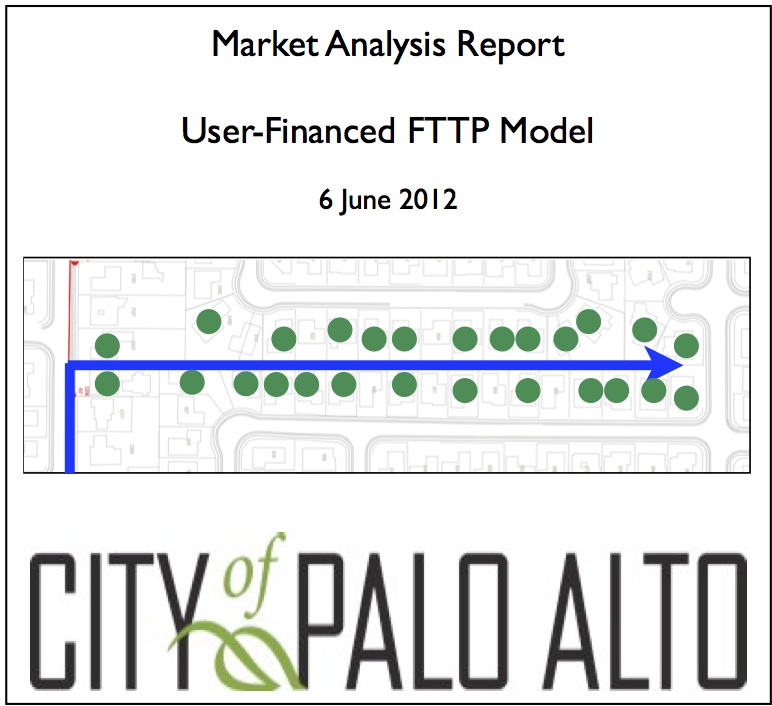A user-financed, municipal fiber-to-the-premises broadband system would be a financial nightmare if launched into a market with mainstream competition, even if it’s subsidized and supported by a profitable city-owned utility.
That’s the finding of a study presented to the City of Palo Alto’s Utility Advisory Commission last night by Tellus Venture Associates. The report assessed the financial potential of user-financed municipal FTTP options, including upfront payments ranging from $1,000 to $5,000, substantial capital contributions by the City and ongoing subsidies of up to $2,000,000 per year.
In a user-financed model, property owners may opt to pay a share of the cost of hooking up to a municipal fiber network, or refuse and remain unconnected.
Very little construction cost savings can be realized by avoiding building lines to uninterested households. A telecommunications network has to be contiguous and a municipal-scale network costs about the same to build whether it serves many homes or just a few.
Upfront fees in the thousands of dollars range proved to be an insurmountable obstacle in a market like Palo Alto that already has two major service providers – AT&T and Comcast – that do an adequate job of meeting the needs and expectations of the majority of residents.
The City’s market research (conducted by RKS Research and Consulting) indicated that less than 10% of residents would be interested in paying $3,000 to connect to a fiber optic broadband network, even if ongoing Internet service was free. When a monthly service fee was included, interest dropped to less than 5%.
Tellus Venture Associates’ modeling showed that even under theoretically perfect conditions, a 24% take rate would be needed to fully pay the cost of construction, and two to three times that many subscribers would be required in any plausible real-world scenario. Even when operating surpluses and tens of millions of dollars in City subsidies were added in, full payback was not possible except in a handful of scenarios where optimistic assumptions were made about initial subscription rates, continuos growth over twenty years and virtually no competitive response from incumbents.
The study concluded that “a fully user-financed citywide fiber-to-the-premise system is not possible to achieve” in a competitive market such as Palo Alto. It could “be built using a combination of upfront user fees and City financing, but there is very little probability of the debt incurred being repaid through operations. Ongoing subsidies would be required”.
The full report is available here, and the accompanying presentation is available here.
Palo Alto user-financed FTTP study, 6 June 2012
User-financed FTTP presentation to City of Palo Alto UAC, 6 June 2012


